- Home
- ILIL ARBEL
ANCIENT ALIENS: MARRADIANS AND ANUNNAKI: VOLUME ONE: EXTRATERRESTRIAL HOLIDAYS Page 3
ANCIENT ALIENS: MARRADIANS AND ANUNNAKI: VOLUME ONE: EXTRATERRESTRIAL HOLIDAYS Read online
Page 3
Egok impatiently tossed coins along the dock near the family’s home where the boat rested, tormenting him, until a slight boy, hungry as were most of the Utians of that stage of Marradian occupation, eagerly promised he could teach Egok and together they would sail the globe. Egok only wanted to sail around the front of his home where his father would be waiting and watching on the enclosed pavilion, a pitcher of Marradian Mai Tais at his elbow.
For a few extra drumma, of no value to one who had so many, Egok persuaded the native to paint the family name in bright red colors along the side of the boat. Aided by a few whacks along the head with a thick stick, the boy prepared the twenty-foot ship and off they went.
Egok easily learned how to steer. The sailor boy thought otherwise and tried correcting him. As they neared the house, the future Law Giver angrily shoved the boy, who toppled into the water.
The Dilemma: Demonstrate his Marradian skills at learning how to sail a boat or pull out a native? Get his new suit drenched or proudly cruise past his adoring father?
For a Marradian, an easy choice. As Egok later wrote in his seismic memoirs, Crossed, But Opened (which we will publish as a special edition): “The child was beneath me. Everything and everyone was beneath me. I didn’t even know if it was a female or male of the species. But how can everything be beneath you and yet you have no ground to walk upon?”
The boy was a strong swimmer, but that didn’t help when Egok drove over him, the engine churning out fresh food for the bottom feeding Sil Sharks. The last Pileggian air bubble evaporated as the boat rounded the bend before the house. His father proudly waved.
Now, you might be surprised that the birth of Egok celebrates that unflattering incident. His long life -- he died at 245 -- was filled with astonishing achievements, from his battle against the crippling disease contracted during the Fatha 4 pandemic, which locked his limbs across his body; struggle to be accepted as a Marradian in a culture which found any physical or mental challenge loathsome; building a just law; fighting for freedom; defeats; victories; exile; fame, disgrace and eternal glory.
He insisted.
The Celebrations
Ta Utian Bo, or The Utian Boy, is the first ritual of the birthday celebration. It’s a morality game in a society which has no doubts about its morality and what is right and wrong. However, as Egok insisted when, at age 182, The Council announced his birthday would be a holiday: “To think requires doubt,” some things must still be felt even if they are predetermined.
No one would ever dare say that Egok chose wrongly, because Egok would never challenge what it meant to be a Marradian. But he lived his life reshaping that, remolding it, questioning subtly in a dogmatic society. If you believed, you must understand. If you understood, you must feel. Some historians view Egok as running alongside the evolution of the Marradian race, interfering where necessary. Quite Anunnakian actually.
So there is no mindless celebration of Egok letting an inferior creature drown to protect the fabric of his new clothes. All members of the family roll the Gadi, or rounded square, to determine who will play which role. A one rolled makes you the father; two, the mother; three, Egok, and four, The Boy.
The Blessing of the Ta Utian Bo begins:
Dana si Egok
Ho virn trade
Egok knows
Feel him
The players then re-enact the story. They’re not allowed to re-write the famous lines, such as when Egok cried, “My new shoes are wet” or his Father said, “Damn servants are always drowning.” But the players are encouraged to bring whatever thoughts or emotions they want to these mini-productions. While immersed as the real characters, they’re encouraged to retain something of themselves, a hybrid. Even if they break down and despise Egok, that’s permissible. It’s one of the rare occasions when dissent against the established thinking is encouraged.
Unlike other holidays, there’s no break for food or drink. Afterwards, the family rests on hard mats, v’oos. How that tradition began is a mystery, but some have speculated that the v’oos represent the bottom of the ocean floor where the Utian Boy slept.
Rest is needed, because the next ritual is so intense: Krak’ta Peer Schlem (Crossed, But Opened), the title of his memoirs.
There was considerable controversy, debate and even defiance before this was accepted as part of the holiday. Many were surprised by Egok’s physical restrictions, unable to believe someone so great could do so much when he was unable to properly use his arms. That was decidedly un-Marradian.
To insist, as Egok did, that anyone celebrating his birthday knows what it’s like to be him caused uneasiness. But power has its power.
There are no blessings for the Krak’ta. No music, no talking. The celebrant’s arms are taped across their chest and they’re given small tasks of their own choosing. How to feed themselves, wash themselves. How to write. How to play games. The point is to find compassion in a race which has none. Often the worshipper will burst into frustrated tears and rip off the bonding. Rarely will someone last the entire thirty minutes and rarer are the family members who can stand to watch.
But even if someone runs off, they must return and finish. Even if someone turns away, they must resume watching. When that happens, everyone chants:
Re Egok si
Ui si
If Egok can,
You can
Egok is a metaphor for the downtrodden and as a guiding spirit for anyone who doubts themselves. Or another.
Once the family has taken their turn, there is another few moments of silence followed by the customary Dash ui Cimric (Thank you, Cimric), and the meal begins.
The Food
Di Gold Rounds. As any school child in the Marradian Galactic Empire knows, these fried potatoes were Egok’s favorite food. Peel eight Di Gold potatoes and grate them, along with two Psha Mild Onions. Fiercely beat eight Ileckian goat eggs, adding brown salt and white pepper to taste. Combine. Add four handfuls of Rion Frying Powder. Shape into rounds.
Fill a heavy frying pan with Marz Oil and heat until bubbling. Lay the Rounds into the pan and cook quickly until golden brown on both sides.
Lay the cooked Rounds on some absorbent tissue to take away the excess fat and quickly transfer to plates. The secret to a perfect Di Gold Round is eating it right away. Any delay causes oiliness. As the famous Marradian chef Narna once said, “The guests wait for the Rounds – not the other way around!”
Additional foodstuffs to serve with the Rounds are curled white Co Cream; homemade Plaided Green Apple Sauce and Alla Berry Jam.
THE ANUNNAKI
FESTIVAL OF LIGHTS
The Anunnaki do not celebrate victories – they do not consider the necessity of vanquishing a wicked species to be a cause for joy. The only victory they deem worthwhile is conquering themselves, achieving the always higher road despite temptations. The Festival of Lights is a good example.
Interestingly, two Earth cultures celebrate very similar holidays; most researchers believe that the Anunnaki influenced the creation of these holidays during the early days of human civilization. One of these holidays is Diwali, India’s joyous holiday. The other is the Jewish Hanukah.
Diwali gets its name from the row upon row of lamps that Indians light outside and inside their homes, symbolizing the inner light that fights the spiritual darkness. It is celebrated in the fall since its origins is a harvest festival. All Indians participate, regardless of faith, and the symbolism is always the triumph of good over evil. Diwali lasts five days.
The Jewish holiday of Hanukah celebrates a military conquest, but one that also signifies the triumph of good over evil. The conquering Greeks looted the Holy Temple in Jerusalem and filled it with pagan idols. The Maccabees, or freedom fighters, drove them out even though the Greeks were much more numerous and vastly stronger. That could have been a miracle in itself, but another one happened.
After cleaning and purifying the Temple, they needed to light the lamps, but the Greeks contaminated all the oil. The M
accabees found one small jar of oil that somehow escaped the notice of the Greeks, thinking it would last for only one day. Miraculously, the oil lamp burned for eight days. The holiday is celebrated by lighting one candle on the first day, adding another on the second day, and so on until eight are lit.
The Anunnaki reason for the celebration is different. Twenty thousand years ago or so, they had an opportunity to annihilate a particular species that gave them great trouble. These people were humanoid, but had the look and turn of the mind of reptiles, making it quite difficult to communicate and make them understand the way of the Anunnaki.
The reptilians conquered and murdered entire populations, erasing ancient civilizations. At one point, their planet was getting perilously close to a position of exact alignment with Nibiru. The Anunnaki could have blasted their entire world out of existence, at will, and had several months to prepare the attack.
But one of their great leaders, Sinhar Innanachamra, objected. She felt that the alignment would allow the Anunnaki to send the powerful Beam of Enlightenment, projected from The Academy. The Beam would open what we call “The Brain Conduit” of the reptilians and make them understand the message of the Anunnaki. If it failed, the Anunnaki would be vulnerable to attack until the end of the alignment of the planets. It was a very clear risk.
After much argument, the Great Council decided that they could not bring themselves to annihilate the reptilians, and had to try the Beam. Happily, it succeeded, the Brain Conduit of the reptilians was opened, and quick communication between them and the Anunnaki resolved the conflicts and began a new life for the reptilians, turning them into a benevolent and reasonable species.
The Festival of Lights is celebrated for nine days on Nibiru. The entire planet is lit – trees, streets, gardens, indoor, outdoor – everywhere the lights illuminate the darkness. And of course, music, beautiful clothes, dancing, and feasts are all part of the joyous occasion, along with a delegation of the reptilian humanoid, part of the joy of turning the darkness of the mind into an enlightened soul.
The Food
Since they do not eat any meat, fish, or seafood, the diet of the Anunnaki is more like a sophisticated, gourmet vegetarian cuisine. They do have milk, meat-like, and cheese-like foodstuffs derived from a fruit that is much like a coconut and comes in different flavors.
The only food from animals are eggs – certain birds, such as the ruby-glow, duchifat, and taavaz, lay two types of eggs – fertile and non-fertile; they are clearly recognizable by their different colors. The Anunnaki eat only white eggs – those that do not produce chicks – and never touch the fertile pink eggs.
Adama Golden Fritters (serves two). Slice two large Adama fruit length-wise. In a separate bowl, beat two eggs of the ruby-glow bird, slowly adding about two tablespoons of all-purpose flour. Chop and add half of a medium ba’zl. Salt and pepper to taste. Layer a skillet with burnt nut oil, or any other oil that can withstand high heat. Cook for ten minutes, vigorously flipping the Fritters from one side to the next to achieve that golden color.
Additional foodstuffs to serve with the fritters:
Snow Tree sweet and sour syrup
Chunky Tapuach sauce
Sliced gevi’na from the cheese protein tree
Uchmanit jam
Equipment, preparation, and cooking
Not necessary. All work is done by mind control.
THE ANUNNAKI AND
MARRADIAN NEW YEARS
There are many deep differences and similarities between Anunnaki and Marradian New Years celebrations, rooted in their disparate galactic viewpoints. They are cousins, natives of Nibiru, and share common foods and customs which, given the bitter enmity since The Parting, have been understandably changed. But not everything!
Ringing In the New Year
Glar Tov, or Happy New Year in Marradian! Obviously, bells, or the dread Kling, are only used as punishment in Marradia, and the holiday is all about trifles and nonsense. A serious people, Marradians allow their sly, humorous side free reign this time of year. There is no idea too fluffy to let go.
Preparations begin months ahead with the Ordering of the Gowns. Since Marradian males prefer the sleek and glitter of women’s fashions, a fierce competition arises every year. How did this tradition begin?
As with many Marradian holidays, the source is the great Egok the Cross-Limbed. Crippled as a child and nearly dying during the Fatha 4 pandemic, Egok’s parents were embarrassed by their only child’s disability (see Chapter Six). Often abandoned for days into the care of an empathic Jessupian plow horse, Egok would wander naked, using a plow harness as a coat. Since his arms made tightening the straps difficult, the resourceful child discovered another way to fend off death by freezing.
His mother, a slim and hateful woman, at least had good taste in clothes. Egok bit his way along the seams of her dresses until he fashioned makeshift gowns, which he hid in the stable. When he proudly displayed his wardrobe to his parents, complete with hat layered in Pissian Grapes, Egok was severely beaten with a tree trunk. As often happens with great people, ideas rejected gain favor once they attain fame and, when Egok became Law Giver, he openly brandished a wardrobe of women’s clothing. Everyone emulated him.
The Gowns
Three different gowns are needed for the New Year: dinner, party and the next morning. While many women believe Felissian cotton irritates their vaginas (the concept of Marradian underwear is unpleasant), the material makes for stunning gowns; a little white Tapi powder alleviates the itching, enabling the party-goer to blithely enjoy the celebrations.
The Games
Anything goes – consider the timeless game of Cimric’s Scrotum. Playing on this standard Marradian curse, the largest person in the room (bearing in mind the small stature of Marradians) climbs onto a ladder, draped in a thick blanket. They pretend to be the scrotum of the Marradian deity. Revelers search beneath the blanket to find out what’s hiding in Cimric’s Scrotum. Not a particularly imaginative species, Marradians might guess a Yambo Bear, enslaved inferior lifeforms or a dead ancestor dwell in the Scrotum, and think of ways to communicate/rescue/or simply party together.
The Dances
Nothing says a Marradian New Year like the Hoovian Waltz. Believed to be composed by Blintz the Light-Hearted, the dance is wonderfully flexible and can be performed by even a single person – the Egok version.
Traditionally, the dinner guests will stop after the first course and line up facing each other. Palms down on each other’s shoulders, the hips will wiggle left and right in conjunction with the head; one thinks of a defiant doll. Slowly the partners form circles, spinning ever more intently like a Zina Top.
The partners angle for the best position, as if wrestling, and whoever has the best leverage will fling the partner across the room; the object is for the flingee to maintain their balance, spinning around, until they’re caught by another dancer. Once all the partners have been changed, the music slows down and they resume the first steps.
The Food
After a month-long celebration of Ashar Marrad and Cimric’s Birthday, even the most dedicated chef will throw up their hands at cooking another meal. Nor do most Marradians want another big dinner; a sampling of small plates suffice. But disrespect cannot be shown guests and at least a couple homemade foods must accompany the drinking.
Yambo Nails. A lovely crunchy treat easily prepared. Take the finger and toe nails of a Yambo Bear and soak them for two days in lukewarm water with a trace of Palodrian lime to soften. Drain thoroughly. Saute over high heat with Grek ginger until lightly browned. In a separate bowl, mix one Val lime with Madrossian vinegar, stirring vigorously. Either serve the Yambo Nails and dipping sauce separately, or combine.
Cotti Cheese. The Jessupian plow horses are especially fertile this time of year and the perfect source for the cud of the Cotti Cheese. Roll up the cheese into a large ball and add a handful of Sen Raisins. Make smaller balls and layer on a baking dish. Bake for 15 minutes at
250 degrees. Remove from the oven and immediately drip melted Fessian chocolate.
The Anunnaki New Year
The Ceremony
Anunnaki New Year is celebrated in great style. The celebrations start in late afternoon, since the light has to be just right to show the changing colors of the robes, and the slanting rays of the two suns of Nibiru are perfect at that time of day.
Usually, people do not teleport to their Assembly Halls, but use the ancient way of traveling by their many canals in gondola-style boats (they are moved by mind power, so no one has to row).
Since cats are highly regarded on Nibiru, and can converse with their people, they accompany the Anunnaki to ceremonies. They are extremely polite, sitting sedately next to their people, watching everything with their huge, intelligent eyes. They precede the humans to the Assembly Hall, and the Anunnaki follow, carrying huge bouquets of flowers. Winter does not prevent flowers such as Ruby Roses from blossoming on Nibiru.
Celebrations are conducted by three officials, who materialize on a podium to carry on the service. They wear white and silver robes. They recite prayers to All-That-Is in their language, which is very close to ancient Aramaic. One very common prayer is Mevorachta Ein-Sof, meaning, Blessed is the All-That-Is. Once the prayer is over, the three officials dematerialize (probably returning to their homes to change their clothes and come back to the celebration). Then the guests move to the next room for the traditional feast.

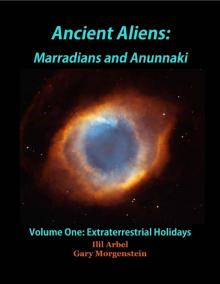 ANCIENT ALIENS: MARRADIANS AND ANUNNAKI: VOLUME ONE: EXTRATERRESTRIAL HOLIDAYS
ANCIENT ALIENS: MARRADIANS AND ANUNNAKI: VOLUME ONE: EXTRATERRESTRIAL HOLIDAYS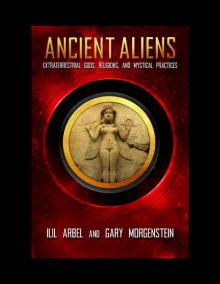 Ancient Aliens_Marradians and Anunnaki_Volume Two_Extraterrestrial Gods, Religions, and Mystical Practices
Ancient Aliens_Marradians and Anunnaki_Volume Two_Extraterrestrial Gods, Religions, and Mystical Practices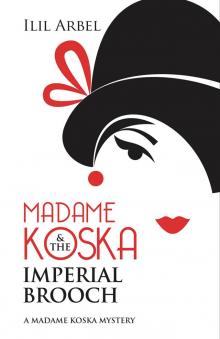 Madame Koska & the Imperial Brooch
Madame Koska & the Imperial Brooch Ancient Aliens: Marradians and Anunnaki: Volume Two: Extraterrestrial Gods, Religions, and Mystical Practices
Ancient Aliens: Marradians and Anunnaki: Volume Two: Extraterrestrial Gods, Religions, and Mystical Practices Miss Glamora Tudor!: The New Chronicles of Barset: Book One
Miss Glamora Tudor!: The New Chronicles of Barset: Book One The Cinnabar Box (Guardians of the Earth)
The Cinnabar Box (Guardians of the Earth)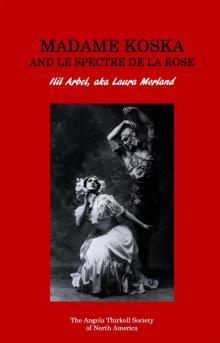 Madame Koska and Le Spectre de la Rose
Madame Koska and Le Spectre de la Rose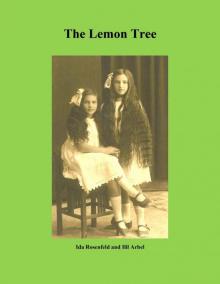 The Lemon Tree
The Lemon Tree Their Exits and their Entrances: The New Chronicles of Barset: Book Two
Their Exits and their Entrances: The New Chronicles of Barset: Book Two